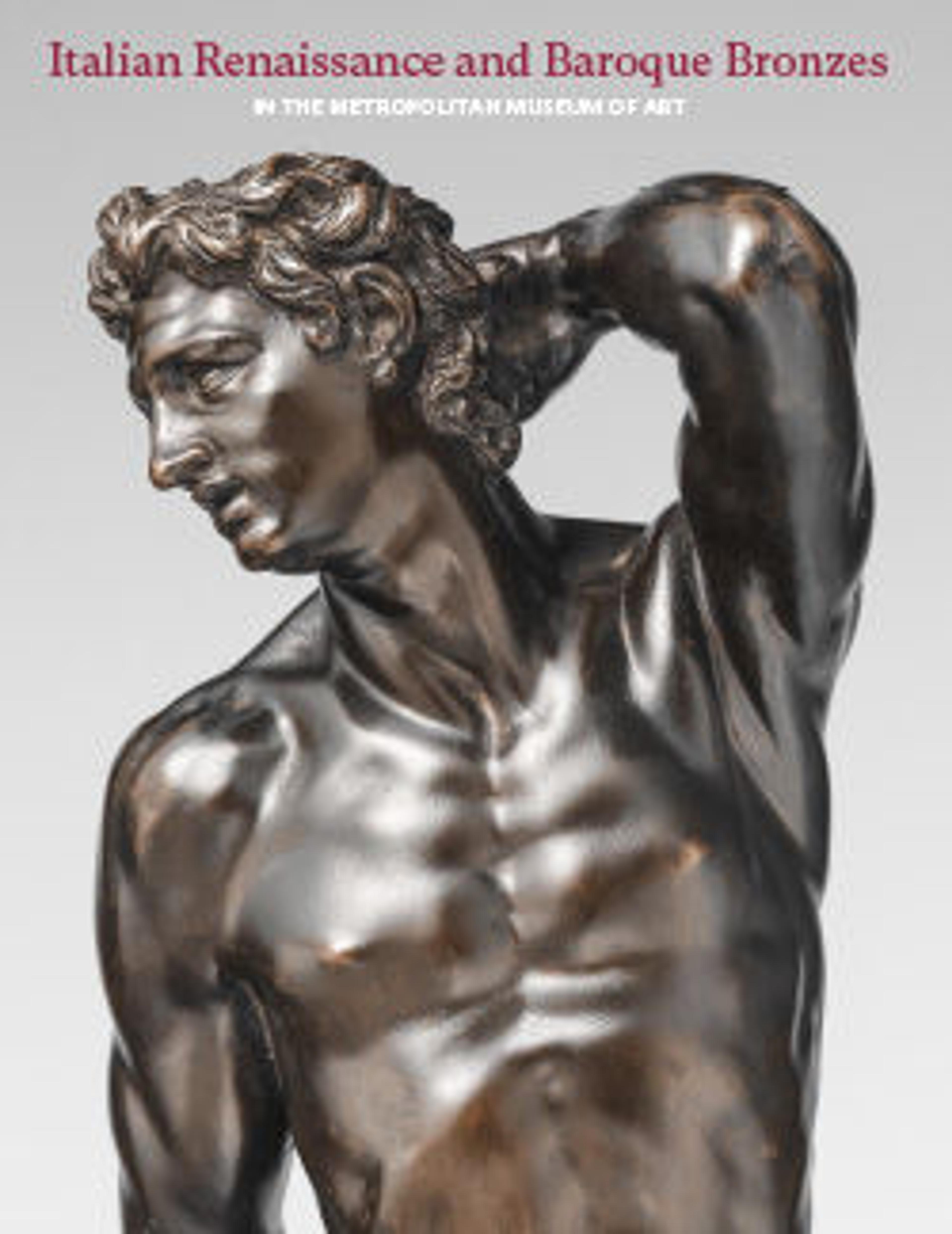Mother ape
The ape, of the tailless Barbary variety, once solicitously steadied two gamboling babies, of whom only pieces of arms and legs remain. Despite the loss, which may have occurred when this massively thick-walled bronze was wrenched from the place it occupied, the planar compositional arrangements of the mother are fully visible and quite ingratiating.
In 1595, the architect Vincenzo Scamozzi recommended his fellow Vicentine, Camillo Mariani, to Francesco Maria II della Rovere, duke of Urbino. The following year, "the Venetian sculptor," whom scholars reasonably identify with Mariani, was paid for labor and materials "for the apes of the fountain of Miralfore." The latter is the villa in Pesaro, still extant, that served the duke as hunting lodge and guesthouse. Its waterworks were centered on the fountain, of which Mother Ape was the crowning element. Water flowed from the wide hole near her left shoulder; her prehensile left foot is poised as if to test the water in the fountain's basin. Three lesser apes that also belonged to this fountain are now in the Boboli Gardens in Florence, having arrived there among possessions inherited by the duke's granddaughter, Vittoria della Rovere, when she married Ferdinando II de' Medici.
The Miralfore fountain, revealing a phenomenal gift for naturalism, comprised Mariani's only known exercise in animal sculpture and his sole work in bronze. Before and after, he worked chiefly in stucco, most notably after his move to Rome. The eight colossal stucco saints by him in the Roman church of San Bernardo alle Terme (1599-1600) are among the most arresting and profoundly spiritual portrayals of the late Counter-Reformation era.
In 1595, the architect Vincenzo Scamozzi recommended his fellow Vicentine, Camillo Mariani, to Francesco Maria II della Rovere, duke of Urbino. The following year, "the Venetian sculptor," whom scholars reasonably identify with Mariani, was paid for labor and materials "for the apes of the fountain of Miralfore." The latter is the villa in Pesaro, still extant, that served the duke as hunting lodge and guesthouse. Its waterworks were centered on the fountain, of which Mother Ape was the crowning element. Water flowed from the wide hole near her left shoulder; her prehensile left foot is poised as if to test the water in the fountain's basin. Three lesser apes that also belonged to this fountain are now in the Boboli Gardens in Florence, having arrived there among possessions inherited by the duke's granddaughter, Vittoria della Rovere, when she married Ferdinando II de' Medici.
The Miralfore fountain, revealing a phenomenal gift for naturalism, comprised Mariani's only known exercise in animal sculpture and his sole work in bronze. Before and after, he worked chiefly in stucco, most notably after his move to Rome. The eight colossal stucco saints by him in the Roman church of San Bernardo alle Terme (1599-1600) are among the most arresting and profoundly spiritual portrayals of the late Counter-Reformation era.
Artwork Details
- Title:Mother ape
- Maker:Camillo Mariani (Italian, 1567–1611)
- Date:1595–96
- Culture:Italian, Urbino
- Medium:Bronze
- Dimensions:Overall (confirmed): 25 1/8 × 13 × 20 5/8 in., 192 lb. (63.8 × 33 × 52.4 cm, 87.0906 kg)
- Classification:Sculpture-Bronze
- Credit Line:European Sculpture and Decorative Arts Fund, 2006
- Object Number:2006.35
- Curatorial Department: European Sculpture and Decorative Arts
More Artwork
Research Resources
The Met provides unparalleled resources for research and welcomes an international community of students and scholars. The Met's Open Access API is where creators and researchers can connect to the The Met collection. Open Access data and public domain images are available for unrestricted commercial and noncommercial use without permission or fee.
To request images under copyright and other restrictions, please use this Image Request form.
Feedback
We continue to research and examine historical and cultural context for objects in The Met collection. If you have comments or questions about this object record, please contact us using the form below. The Museum looks forward to receiving your comments.
